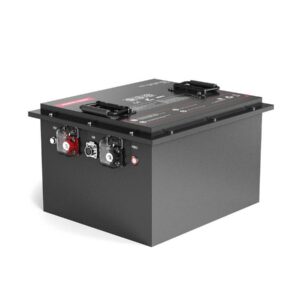
What battery is better than lithium?
Emerging battery technologies surpassing lithium-ion in specific applications include sodium-ion, vanadium redox flow, and thermal storage systems. Sodium-ion batteries leverage abundant materials and lower costs (≈$40-80/kWh vs. lithium’s $100-150/kWh), making them viable for grid storage. Vanadium flow batteries excel in cycle longevity (>20,000 cycles) for stationary applications. Advanced thermal storage using materials like Rondo’s Heat Batteries achieves 98% efficiency for industrial heat needs. While lithium remains dominant in energy density (200-265 Wh/kg), these alternatives address critical limitations in resource scarcity, safety, and large-scale economics.
How to Safely Dispose of and Recycle Car Batteries
What makes sodium-ion batteries superior for grid-scale storage?

Sodium-ion batteries utilize earth-abundant sodium instead of scarce lithium, cutting material costs by 30-40%. Their inherent non-flammability eliminates thermal runaway risks prevalent in high-density lithium packs. Deep Dive: With energy densities reaching 160 Wh/kg (vs. lithium’s 265 Wh/kg), sodium-ion excels where size isn’t critical. Pro Tip: Use sodium-ion for backup power systems requiring 4+ hour discharge cycles—their stable chemistry maintains 90% capacity after 5,000 cycles. For example, CATL’s first-gen sodium-ion batteries power 250 kWh storage units in Chinese substations, operating at -20°C without performance drops.
Why choose vanadium flow batteries for renewable integration?
Vanadium redox flow batteries (VRFBs) offer unlimited cycle life through electrolyte regeneration, outperforming lithium’s 3,000-5,000 cycle limit. Their decoupled power/energy scaling enables customizable storage durations (4h to 100h+). Deep Dive: While upfront costs reach $600/kWh (vs. lithium’s $450), VRFBs achieve <$0.01/kWh/cycle over 25-year lifespans. Real-world example: China’s Dalian Flow Battery Station uses 800 MWh VRFB capacity to stabilize wind farms, maintaining 98% round-trip efficiency daily since 2022. Pro Tip: Deploy VRFBs where daily full cycling occurs—their near-zero degradation thrives under heavy use.
| Parameter | VRFB | Lithium-ion |
|---|---|---|
| Cycle Life | ∞ (electrolyte) | 3,000-5,000 |
| Scalability | Linear cost scaling | Exponential above 100 MWh |
Are Duracell Car Batteries a Good Choice for Your Vehicle?
How does thermal storage compete with electrochemical solutions?
Rondo Energy’s brick-based thermal batteries store electricity as 1500°C heat at $20-60/kWh—1/5th of lithium’s cost. Their instantaneous discharge capability delivers 300+ MW bursts for industrial processes. Deep Dive: Using refractory materials, these systems achieve 99% daily efficiency with 30-year lifespans. A California cement plant replaced lithium backups with 2 GWh thermal storage, cutting energy costs by 40% while eliminating fire suppression needs. Pro Tip: Thermal storage shines in continuous industrial heat demand—recovery boilers can directly utilize stored thermal energy without conversion losses.
Battery Expert Insight
FAQs
Can sodium-ion batteries replace lithium in EVs?
Not currently—their 160 Wh/kg density limits range. However, Chinese automakers like BYD are testing hybrid packs combining sodium and lithium cells for cost-effective city EVs.
Are vanadium batteries explosion-proof?
Yes, VRFBs use aqueous electrolytes without flammable components, achieving UL1973 safety certification for indoor installation near residential areas.
What’s the main barrier to thermal storage adoption?
Infrastructure compatibility—existing heat distribution systems often require retrofitting to utilize stored thermal energy effectively.
